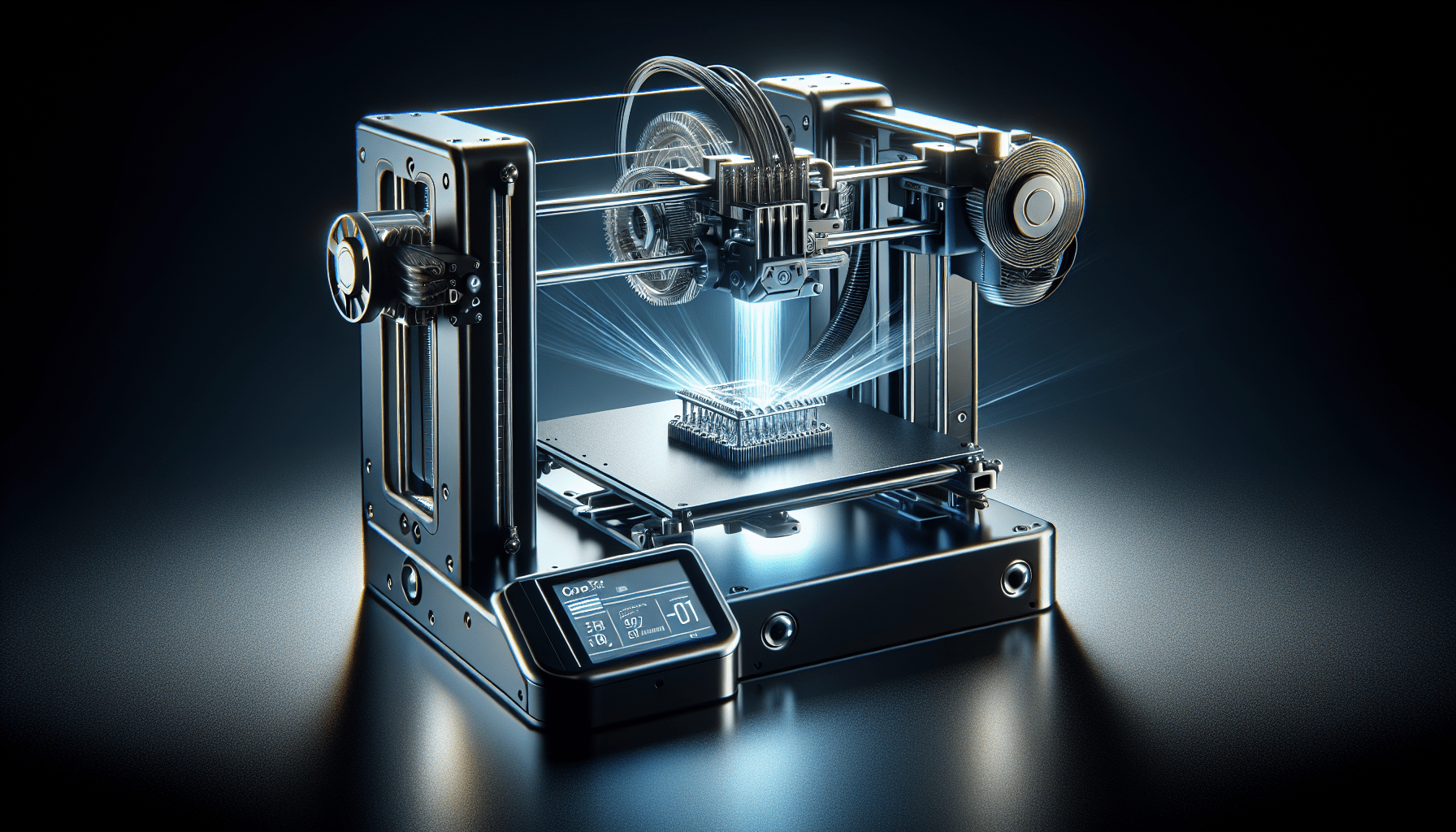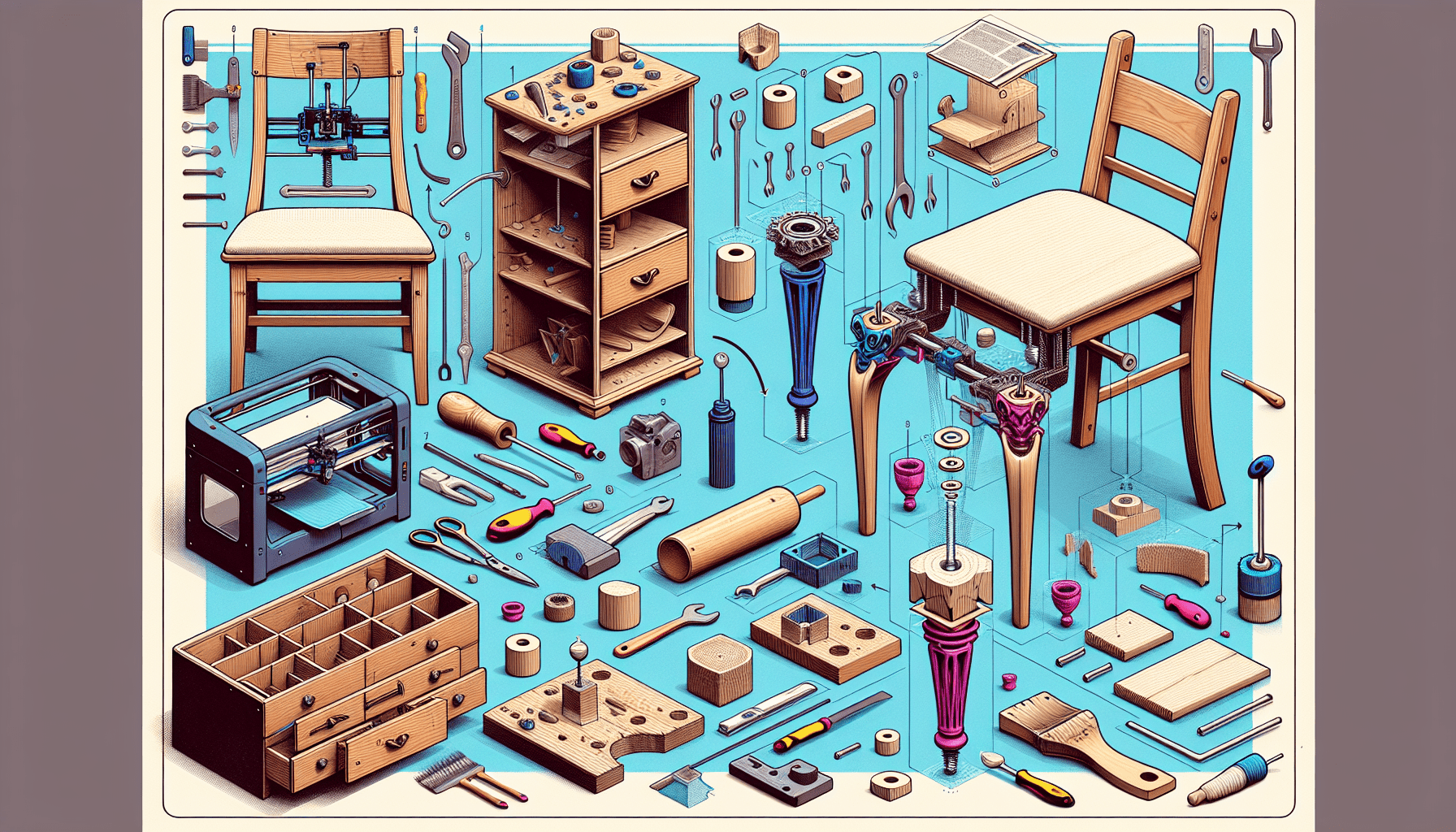Creality K1C 3D Printer, 2024 New Version 3D Printers with 600mm/s Fast Printing Speed, Support Carbon Fiber Filament 300℃ High-Temp Print, Auto Leveling and Clog-Free Direct Extruder
$559.00 (as of June 19, 2025 23:45 GMT +00:00 - More info)Discover how 3D printing is revolutionizing breast reconstruction surgery with the development of customized breast molds. Researchers at the University of East Anglia (UEA) are using 3D scanning and additive manufacturing to create personalized breast molds that perfectly replicate a patient’s breast shape. By optimizing reconstruction procedures, these molds minimize the need for additional surgeries and enhance surgical precision and efficiency. This innovative approach showcases the transformative potential of 3D printing in healthcare, offering tailored treatments that improve outcomes and speed up the recovery process for patients.

UEA Researchers Pioneering Personalized Breast Reconstruction
Streamlining the Reconstruction Process
Breast reconstruction surgery plays a critical role in the physical and emotional recovery of patients who have undergone mastectomies. However, traditional methods often require multiple corrective surgeries, leading to increased physical discomfort, emotional distress, and prolonged recovery periods. In an effort to address these challenges, researchers at the University of East Anglia (UEA) are pioneering the use of 3D printing technology to create personalized breast molds, streamlining the reconstruction process and potentially enhancing post-surgery recovery.
Utilizing 3D Scanning and Additive Manufacturing
Creating Customized Breast Molds
UEA’s approach to breast reconstruction surgery involves utilizing 3D scanning and additive manufacturing techniques to create customized breast molds for individual patients. By accurately replicating a patient’s breast shape, surgeons can optimize the reconstruction procedures, minimizing the need for further interventions. This innovative approach marks a departure from traditional methods, which often rely on more generalized techniques and can result in suboptimal outcomes.
“The use of 3D scanning and printing can help surgeons to do a better job,” says Ken Tam, a PhD student involved in the research. “Plastic surgery has not yet fully embraced the potential of 3D technology to improve the surgery’s precision and efficiency. The personalized breast mold is one example that looks promising to be used in real practice to achieve the benefits.”
Optimizing Reconstruction Procedures
Minimizing the Need for Further Interventions
One of the key advantages of using 3D printed breast molds is the ability to optimize reconstruction procedures, thereby minimizing the need for further interventions. By precisely replicating a patient’s breast shape, surgeons can better plan and execute the surgery, resulting in improved outcomes and reduced complications. This not only saves time and resources but also enhances the overall patient experience and satisfaction.
Additionally, by utilizing 3D scanning technology, surgeons can accurately assess the patient’s unique anatomy and tailor the reconstruction procedures accordingly. This personalized approach ensures that each patient receives the most appropriate and effective treatment, leading to better long-term results.
Potential Benefits of 3D Technology in Plastic Surgery
Improving Surgery’s Precision and Efficiency
The integration of 3D printing technology in plastic surgery has the potential to revolutionize the field, offering numerous benefits to both surgeons and patients. One of the key advantages is improved precision. By utilizing 3D scanning technology to capture the patient’s anatomical data, surgeons can create customized surgical plans and prosthetics that fit the patient’s unique anatomy perfectly.
This precision not only improves the aesthetic outcome but also enhances the functional results. With more accurate planning and execution, surgeons can achieve better symmetry, natural-looking results, and improved overall patient satisfaction.
Furthermore, the use of 3D printing in plastic surgery can increase efficiency. Traditional methods often rely on manual measurements and hand-crafted prosthetics, which are time-consuming and can lead to inconsistencies. With 3D printing, surgeons can quickly and accurately create customized implants, surgical guides, and other tools, saving valuable time and resources.

Transformative Impact of 3D Printing in Healthcare
Enhancing Patient Outcomes and Satisfaction
UEA’s initiative to utilize 3D printing in breast reconstruction surgery exemplifies the transformative impact of this technology in healthcare. By harnessing the power of 3D printing, medical professionals can enhance patient outcomes and satisfaction, ultimately improving the overall quality of care.
The ability to create personalized breast molds allows surgeons to tailor treatments to individual patients, taking into account their unique anatomy and preferences. This level of customization leads to improved surgical outcomes, reduced complications, and enhanced patient satisfaction. Patients feel more heard and valued when their specific needs are taken into consideration, leading to a more positive overall experience.
Additionally, 3D printing technology offers healthcare providers greater flexibility and adaptability. Surgeons can adapt and modify designs on-demand, ensuring that the treatment remains up-to-date and in line with emerging medical advancements. This flexibility allows for continuous improvement and refinement of surgical techniques, resulting in better patient outcomes and a more efficient healthcare system as a whole.
Promising Practical Applications of 3D Printed Breast Molds
Delivering More Effective Treatments
Beyond breast reconstruction surgery, the use of 3D printed breast molds holds promise for a wide range of practical applications in the field of plastic surgery. By enabling surgeons to accurately replicate a patient’s unique anatomy, 3D printing technology can assist in various procedures, such as breast augmentation, mastopexy (breast lift), and reduction mammoplasty.
In breast augmentation, for example, 3D printed breast molds can help surgeons visualize the desired results more accurately, allowing for better communication between the patient and the surgeon. This visual aid improves the decision-making process, ensuring that the patient’s expectations are met while minimizing the risk of overcorrection or undercorrection.
Similarly, in mastopexy and reduction mammoplasty procedures, the use of 3D printed breast molds allows surgeons to precisely plan and execute the surgery, resulting in better symmetry, reduced complications, and improved aesthetic outcomes. This technology opens up new possibilities for plastic surgeons, enabling them to offer more effective and personalized treatments to their patients.

Speeding Up the Recovery Process for Patients
Harnessing Technology for Tailored Treatments
One of the key advantages of utilizing 3D printed breast molds in breast reconstruction surgery is the potential to speed up the recovery process for patients. By minimizing the need for further interventions and optimizing the surgical procedures, patients can experience shorter hospital stays, reduced post-operative pain, and faster overall recovery times.
The customization offered by 3D printing allows surgeons to create implants and prosthetics that closely resemble the patient’s natural anatomy. This reduces the risk of complications, such as implant malpositioning or implant-related infections, which can further prolong the recovery process.
By harnessing the power of technology and tailoring treatments to individual patients, plastic surgeons can greatly enhance the recovery experience, improving the overall quality of care and patient satisfaction.
Challenges in Embracing 3D Printing in Plastic Surgery
Future Implications and Developments
While the use of 3D printing technology in plastic surgery holds great promise, there are also challenges that need to be addressed for widespread adoption. One of the main challenges is the cost associated with 3D printing equipment and materials. Currently, 3D printing technology can be quite expensive, limiting its accessibility to certain healthcare facilities and patients.
Additionally, there are regulatory and ethical considerations that need to be taken into account. As with any new technology, there is a need for standardized protocols, guidelines, and regulations to ensure patient safety and quality of care. Furthermore, ethical concerns, such as patient consent and data privacy, must be carefully addressed to ensure that patients’ rights are protected.
Despite these challenges, the potential benefits of 3D printing in plastic surgery are undeniable. With ongoing research and development, it is expected that the technology will become more affordable and accessible in the future, opening up new possibilities for surgical interventions and patient care.

The Role of Research and Innovation in Surgical Efficiency
Advancing Medical Practices with 3D Printing
UEA’s pioneering research in personalized breast reconstruction exemplifies the crucial role of research and innovation in advancing surgical efficiency. By pushing the boundaries of traditional methods and embracing new technologies, researchers and medical professionals can disrupt the status quo and revolutionize patient care.
As the field of 3D printing continues to evolve, so too will its applications in plastic surgery. Ongoing research and development efforts are essential to unlock the full potential of this technology and ensure its safe and effective integration into clinical practice.
Through collaborations between researchers, surgeons, and medical device companies, new solutions can be developed, tested, and implemented, ultimately leading to improved surgical outcomes, enhanced patient satisfaction, and a more efficient healthcare system.
Conclusion
The Promising Future of Customized Breast Molds with 3D Printing
The use of 3D printing technology in personalized breast reconstruction holds great promise for streamlining the reconstruction process and enhancing post-surgery recovery. By utilizing 3D scanning and additive manufacturing techniques, researchers at UEA are able to create customized breast molds that optimize reconstruction procedures and minimize the need for further interventions.
The potential benefits of 3D printing in plastic surgery extend beyond breast reconstruction, offering a range of practical applications that can improve surgical precision and efficiency. By harnessing the transformative power of 3D printing, medical professionals can enhance patient outcomes and satisfaction, ultimately revolutionizing the field of plastic surgery.
While challenges such as cost and regulatory considerations remain, ongoing research and innovation efforts are paving the way for the wider adoption of 3D printing in plastic surgery. With continued advancements and collaboration between researchers, surgeons, and medical device companies, the future of customized breast molds with 3D printing looks increasingly promising.











